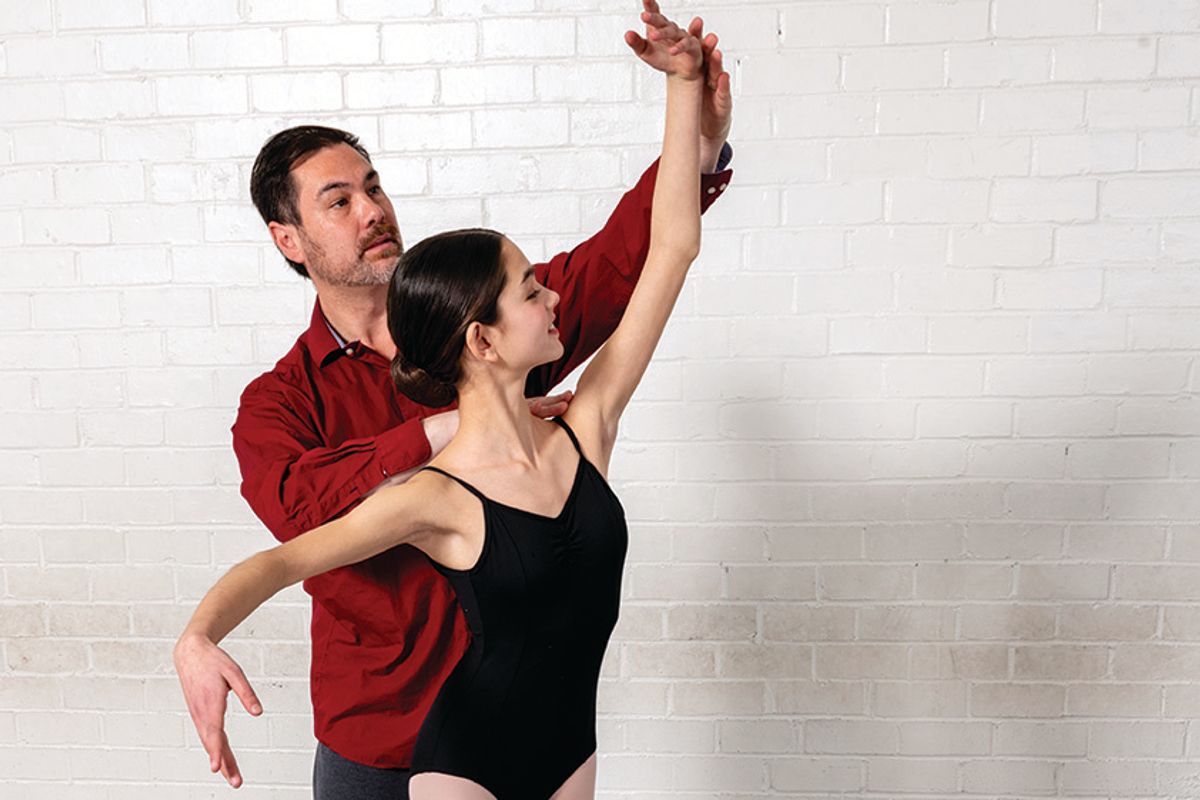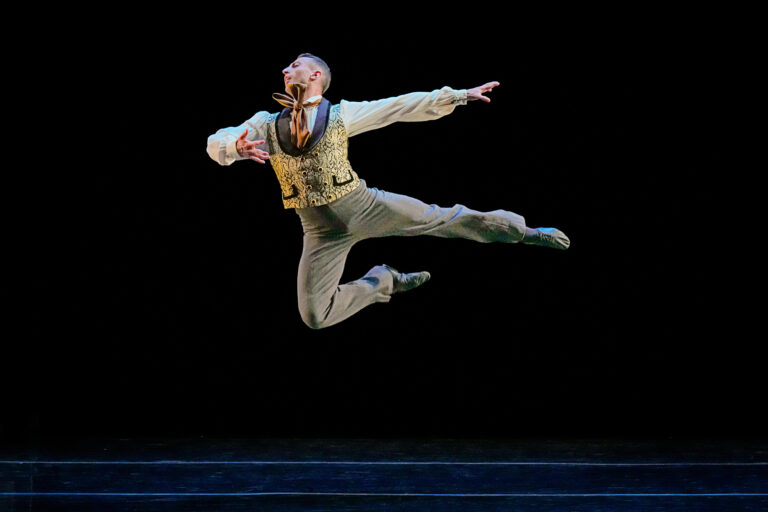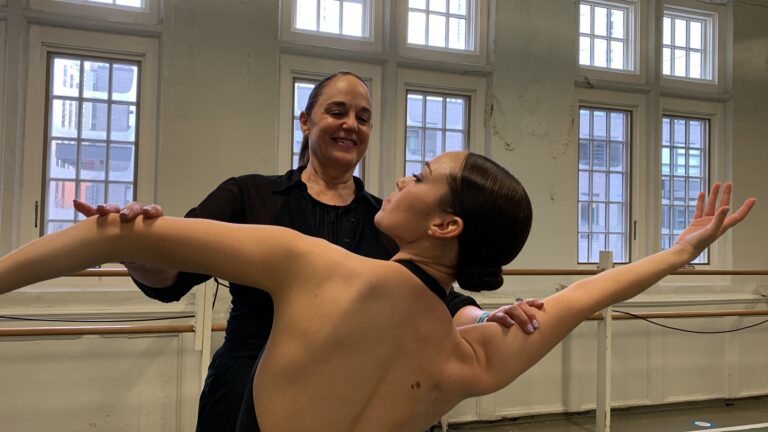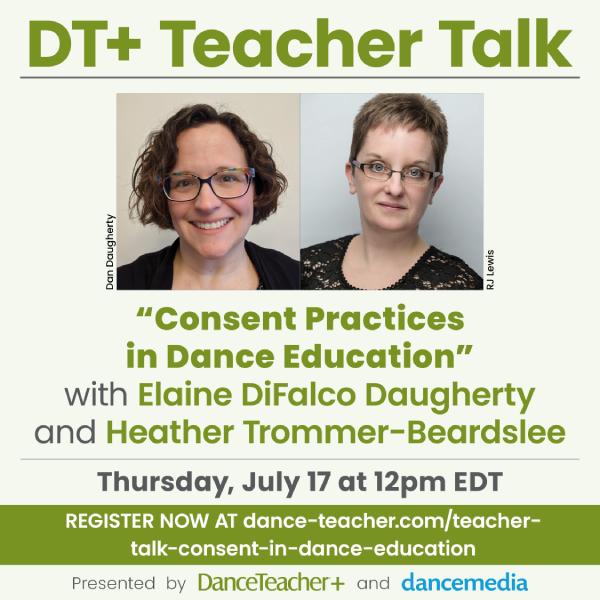
In a spacious upstairs room in his San Francisco home, ballet teacher Christopher Lam gently holds on to an ironing board as he pliés, tendus and dégagés in his socks on the wood floor. He is leading students in a virtual ballet class on Zoom in light of the San Francisco Bay Area’s shelter-in-place order that has closed the doors of every dance studio where Lam normally teaches. After a particularly speedy and challenging frappé exercise with fondus, he steps up to the camera and says, laughing, “Dancers, I think that one was a bit ambitious for home—juggling the slippery floor and ironing board.”
Teaching from home has caused Lam to upend his normal approach. Individual corrections and hands-on feedback have given way to more demonstration and a quicker class pace. Thankfully, his Level 4 and 5 teens at Berkeley Ballet Theater have a strong foundation to build upon at home—a set class that they’ve been working on all year. “They don’t have to think about choreography, just the task within the choreography,” Lam says. “The plus side is that the steps they do, they are really doing to perfect.”
Lam, whether delivering class in-person or online, emphasizes theatricality, musicality and a sequential approach to ballet technique derived from his years studying Vaganova technique at the Australian Ballet School. He studied the Royal Academy of Dance syllabus prior to joining ABS, and his approach mixes the precise placement and alignment of RAD and the expressiveness of Vaganova. “I lean more toward the Vaganova system, because the progression is really clever,” he says. “But it is a blend. I incorporate whatever I need. I think it’s really important that we teach young students artistry and storytelling.”
In general, Lam finds that training systems outside Australia don’t place enough emphasis on theatricality and musicality, which he considers every bit as important as technique. “In Australia it is very much seen that theatricality and musicality need to be woven into the fabric of the technique,” he says. “I think that classes should be geared specifically toward that.” For Lam that could mean verbally providing a character or setting for their movement or discussing the history behind a certain step. Lam threads his ballet history knowledge into class, freely name-dropping ballets, choreographers, composers and dancers whenever appropriate.
For musicality, Lam’s exercises include specific musical benchmarks that students must hit. “It helps them develop a certain finesse with the music, rather than understanding it as just a layer that’s put on top after they learn all the physical shapes,” he says. He also draws attention to the breath, starting each combination with a soft inhalation.
To prevent students from developing bad habits, Lam often stops the music and has them start again. “A teacher of mine in Australia once told me, ‘When teaching children, don’t be afraid to stop class. If you see something you don’t like, stop and have them start again, because otherwise they’re just building bad habits.’ That to me was an incredible piece of advice.” Lam remembers one past class in which he spent the whole hour and half on only pliés and tendus as a result.
Lam’s students quickly adapt to the high bar he sets for them, both technically and in regard to class etiquette. “I make my students begin and finish each exercise properly,” he says. “I have a rule that once I’ve taught the exercise, however long it takes for them to get into position, we wait in that position.” He says it helps students build the habit of immediately transitioning between exercises without fidgeting—a necessary skill for performing onstage. “We’re not just teaching them steps,” he says. “We’re teaching them how to be a professional and what the whole artform encompasses.”
Christopher Lam was born in Brisbane, Australia, where he trained with Betsy Sawyers and Beverly Flanagan before entering the Australian Ballet School. After graduation he danced with The Australian Ballet for six years, before dancing abroad with Le Grand Théâtre de Genève, Gothenburg Ballet, Croatian National Ballet and Les Grands Ballets Canadiens. Since moving to the San Francisco Bay Area, he has taught youth and adult classes at ODC, Berkeley Ballet Theater, Alonzo King LINES Ballet, Smuin Ballet, Menlowe Ballet, Bay Pointe Ballet, Oakland Ballet, Shawl-Anderson Dance Center and Jessica Lang Dance.
Aria Gerking, 13, is a Level 6 student at Berkeley Ballet Theater.






